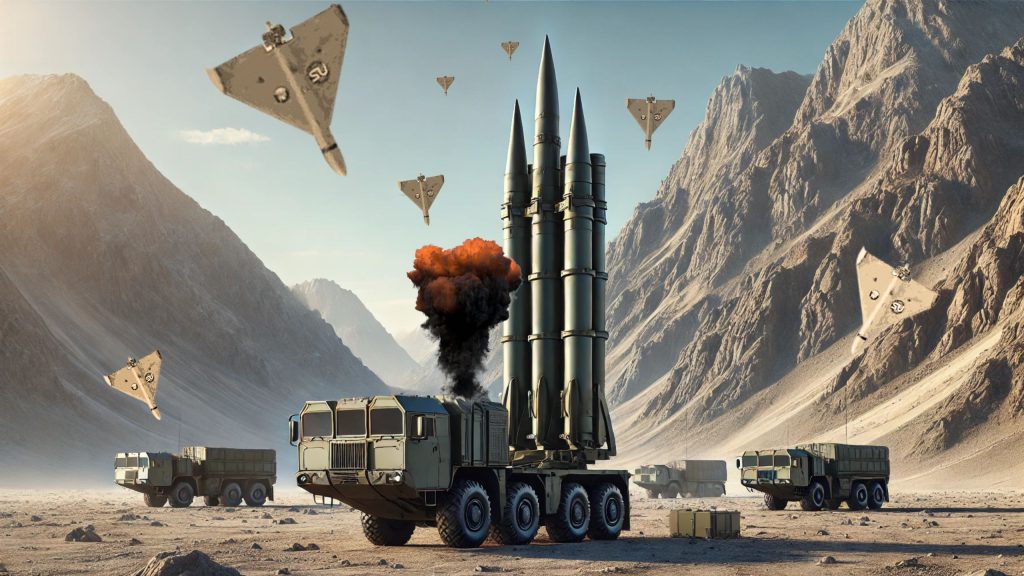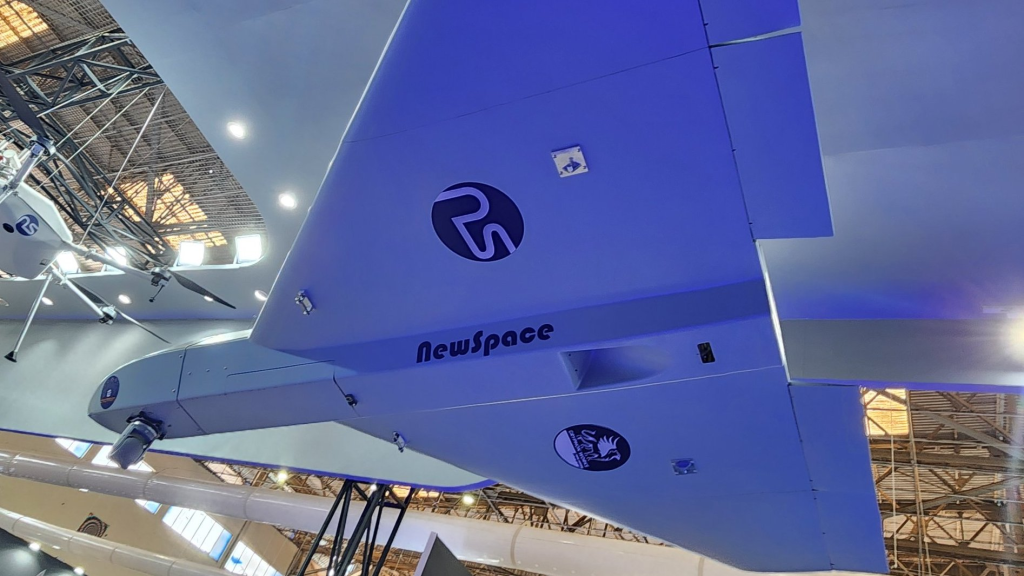
Even as India’s dilemmas over its next manned fighter drastically deepen, even as the Indian government begins navigating the waters of a fresh Trump pitch of F-35 stealth fighters, a game changing bit of flight test has just begun at a test range in India’s aeronautical hub of Karnataka. Sheshnaag-150, a long-range collaborative attack swarming system developed by startup Newspace Research Technologies (NRT) has taken to the air to validate not just the flying vehicle, but far more importantly the homegrown code that will allow these systems to perform ‘mass and saturation’ attacks on protected enemy sites.
While still images of the Sheshnaag 150’s first flight were posted on social media during the just concluded Aero India 2025 show in Bengaluru, Livefist has a short video of the flight:
The Sheshnaag-150, part of an intended family of intelligent swarming sytstems being developed from scratch by NRT, is designed for coordinated swarm attacks, allowing multiple drones to overwhelm enemy defenses and execute precision strikes. With an operational range of over 1000 km and endurance of over 5 hours, it can loiter over target areas, providing real-time surveillance and strategic attack options. The air vehicle itself is perhaps the most rudimentary part of the program, the real meat of NRT’s package being the software and electronic connective tissue that will play mother to the Sheshnaag 150 and the other collaborative systems being delivered under the Sheshnaag umbrella. This particular saystem under test will be able to autonomously identify, track, and engage enemy targets with minimal or no human intervention. Apart from strike missions, it supports ISR (Intelligence, Surveillance, and Reconnaissance) and electronic warfare (EW) operations. The ability to carry 25-40 kg warheads allows for significant damage to enemy infrastructure, vehicles, or personnel.
The Sheshnaag 150 is being developed internally by the startup and will be pitched for the certain deep strike swarm-based needs of the Army, Air Force and the Navy. As the Indian armed forces grapple with conventional gaps and juggle the implications of budgetary pressures, the space for swarming systems can only blow up. In the words of an IAF officer familiar who was briefed on the Sheshnaag 150 at the Aero India 2025 show, “There is always space for such a platform which can create a combat mass with disaggregated payloads and attack options.”
When ready and deployed, India could deploy the Sheshnaag-150 systems to strengthen its defence posture along the Line of Actual Control (LAC) with China and the Line of Control (LoC) with Pakistan. Given the long-range and swarm capabilities of these drones, they could be used for persistent surveillance and precision strikes against enemy military build-ups in the event of an escalation, bunkers, and infiltration attempts. For instance, during a border standoff, a swarm of Sheshnaag-150 drones could be launched to patrol high-altitude regions, identifying adversary troop movements in real time. If an incursion is detected, these drones could autonomously engage enemy positions, neutralising threats before they escalate into full-scale confrontations, while minimising risks to Indian soldiers.
Beyond border security, India could perhaps use the Sheshnaag-150 for preemptive counter-terror operations in hostile areas. If intelligence suggests an impending terror attack, a drone swarm could be dispatched to track and eliminate high-value targets in remote hideouts along the LoC, particularly in areas where manned operations would be risky. The drones could conduct coordinated strikes on terror camps, ammunition depots, or infiltration routes, effectively disrupting enemy networks. Additionally, their electronic warfare (EW) capabilities could jam enemy communications, further degrading their ability to coordinate attacks.
Building small air vehicles isn’t overly complex. But developing the algorithmic secret sauce that converts them into intelligent, resilient, constantly self-refreshing flying weapons that talk to each other and chart out autonomous, efficient attack plans is a whole different thing. NRT, which has bet the farm on the success of this proprietary mother-code, already has a mature fixed wing swarming stack which has been tested with radio comms, 4/5g and SATCOM options. According to an update on the company’s LinkedIN page, NRT commanded and controlled a swarm of drones from its home city of Bengaluru while the swarm was flying in Ladakh over 2,500 km away at the other end of the country, show-casing very long range control and communication with deep strike drones. The company has also recently announced development of a visual navigation system (VNS), which can help the Sheshnaag 150 swarm navigate in global nav-sat system (GNSS) denied environments. The build-up to testing the Sheshnaag-150 has allowed NRT to bring its swarming autonomy stack to an advanced level.
Commentators on social media, where the Sheshnaag 150 broke cover this week, have likened the system to the Iranian Shahed 136 (or the Russian Geran 2) loitering munition, though as stated, it is the software framework in which Sheshnaag 150 and its cousin systems will operate that will separate it widely from conventional systems on market. The Indian Air Force currently operates the tactical non-swarming Israeli Harop as a frontline loitering munition.

When fielded, the Sheshnaag-150 will enhance modern battlefield capabilities by reducing reliance on expensive, crewed aircraft while increasing operational flexibility. Its ability to saturate enemy defenses and conduct cost-effective precision strikes will likely make it very valuable in attritable warfare, exemplifying to most watching, the future of warfare.

Introducing the Sheshnaag program on social media this week, NRT CEO Sameer Joshi wrote, “Much like the mythological multi headed snake from Indian scriptures which strikes its prey with deadly effects, the different types of unmanned systems under the Sheshnaag brand will undertake precision strikes in the tactical battlefield area with de-centralised swarm based kinetic and non-kinetic effects. Utilising collaborative autonomy and advanced mission workflows, these one-way attack UAVs will be able to saturate targets between ranges of 15 km, to strikes in depth of over 1000 km. NRT’s Sheshnaag series will enable next-generation concept of operations for Indian MoD users. The Sheshnaag drones are a major development initiative under NRT’s Fused Teaming With Uncrewed Rapid Effects FUTURE multi-domain combat doctrine.”
While the Sheshnaag program is currently internal, NRT is already plugged into a major active capability development program with the Indian military. You can read about the latest (and biggest) here. In 2021, NRT won a $15 million order from the Indian Army to supply 100 swarm drone units to develop swarming concept of operations (CoP_ as well as explore technologies like manned unmanned teaming, with an emphasis on learning lessons to help design future swarming systems.
